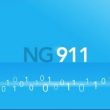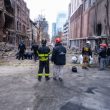Bill to reclassify 911 telecommunicators is long overdue
The 911 telecommunicator community received some news last week that undoubtedly buoyed their spirits. A bill was introduced into the U.S. House by Rep. Norma Torres (D-Calif.)—a former telecommunicator—and Rep. Brian Fitzpatrick (R-Pa.)—a former Federal Bureau of Investigation (FBI) special agent and federal prosecutor—that would give telecommunicators (i.e., call-takers and dispatchers) the recognition they richly deserve as an integral component of public safety and emergency response.
The 911 Supporting Accurate Views of Emergency Services (SAVES) Act would place telecommunicators under the category of “protective service occupations” in the Office of Management and Budget (OMB) Standard Occupational Classification (SOC) catalog—the category that includes police officers and firefighters. Currently, telecommunicators fall under the category of “office and administrative support occupation,” a classification that includes mail clerks, secretaries, office clerks, typists, meter readers, telephone operators, mail carriers, file clerks, bank tellers, gambling cage workers and the like.
“After more than 17 years as a 911 dispatcher, I know firsthand the challenges our public-safety dispatchers face, the stress they are put under, and the critical importance of their work. Without dispatchers, law enforcement, firefighters, and EMTs wouldn’t be able to do their jobs,” Torres said in a statement.
A year and a half ago, the OMB had an opportunity to change the job classification for telecommunicators. SOC reclassification is something that occurs every 10 years across all industries, with the latest cycle ending in 2017. Unfortunately, the OMB—which oversees the performance of federal agencies and administers the federal budget—declined to do so, keeping telecommunicators where they have been for decades.
It was an incredibly wrong-headed decision. Here’s why:
Let’s start at the beginning. On February 16, 1968, Alabama Speaker of the House Rankin Fite made the first emergency telephone call in the United States using the 911 code. Early on, secretaries in law-enforcement agencies often answered emergency calls for assistance and then passed their notes to emergency responders. This explains why the profession originally was classified with other clerical-type professions.
Five decades later, the 911 profession is as different from its origin as night is different from day. Today’s 911 telecommunicator still fields emergency calls, but also is working with sophisticated technologies, such as computer-aided dispatch (CAD), geographic information systems (GIS), and automatic vehicle location systems.
But the technology in place today by itself is not what separates 911 telecommunicators from clerical workers; rather, it is that 911 telecommunicators use such technology to direct emergency response and to provide police officers, firefighters and emergency medical technicians (EMTs) with situational awareness that makes them better at their jobs and keeps them safer.
“There is a misunderstanding of what 911 professionals do,” says Mark Reddish, senior counsel and manager of government relations for the Association of Public-Safety Communications Officials (APCO). “They don’t simply answer the phone, take information and then type it into a computer or relay it over the radio. That is a dramatic oversimplification of the work performed.”
“Telecommunicators are the first first responders,” adds Curtis Sutton, executive director of the Tennessee Emergency Communications Board—which oversees 911 service in the state—and Tennessee’s representative to the National Association of State 911 Administrators (NASNA). “Without 911 telecommunicators, first responders at the scene couldn’t do their jobs.”
The 911 industry leadership theorizes that this has been one of the OMB’s issues in terms of reclassifying 911 telecommunicators to the protective service category. Generally, 911 telecommunicators are not at the scene—they do what they do in communications centers that usually are miles away from where the danger is occurring. Jennifer Kirkland, 911 operations administrator with Vail (Colorado) Public Safety Communications Center, takes issue with the notion.
“Telecommunicators are the first people on scene, regardless of their physical location,” Kirkland says. “They determine the response that will be dispatched, they manage the scene throughout the incident, they relay vital situational awareness and, in many cases, provide life-saving instructions to the caller before first responders arrive.”
Brian Fontes, president of the National Emergency Number Association (NENA) also finds the “at the scene” argument specious.
“What about doctors who engage in telemedicine—are they no longer doctors because they are not physically with the patient?” Fontes asks. “Where’s the logic in that? The same can be said regarding 911 telecommunicators.”
Speaking of situational awareness, 911 telecommunicators have skill sets and training that enable them to pick up on subtleties during an emergency call that could mean the difference between life and death, according to Reddish.
“One example I’ve heard involved a telecommunicator hearing in the background someone racking a shotgun,” Reddish says. “They’re trained to hear that kind of thing and take action to protect responders in the field.”
That’s a vital bit of information to pass along to law-enforcement officers who are en route to the scene. The ability to provide this level of situational awareness will increase exponentially as Next Generation 911 (NG911) technology is implemented in the nation’s public-safety answering points (PSAPs).
Such broadband-enabled systems will improve dramatically the ability of PSAPs to receive video—from fixed and mobile surveillance systems, from devices worn by law-enforcement officers and from citizen smartphones—and eventually data from billions of sensors. Increasing the ability of 911 telecommunicators to view video and receive sensor data not only will improve the situational awareness they provide, but it also will remove the “at the scene” argument against reclassification, according to Sutton.
“When all of this comes into the 911 center, telecommunicators literally will have eyes on the scene,” Sutton says. “They will be staging the scene for the first responders. They will have a lot more information at their disposal, and they will need to quickly decide what is useful. They also will have to be careful in examining the scene—for example, is that a weapon on the coffee table?”
By now, it should be clear to the reader that a big difference exists between 911 telecommunicators and clerical workers. But there is more compelling evidence, starting with the fact that 911 telecommunicators need to keep their wits even when the person on the other end of the line is losing theirs. This is no easy task, and one that takes a special person with unique skillsets.
“Let’s be clear, clerical workers are very much needed, and they perform desired and necessary functions within a business,” Kirkland says. “But what you’re hiring for in a 911 telecommunicator is a level of professionalism that is above and beyond that of the clerical worker.
“You’re looking for someone who can stay calm, cool and collected in an emergency, you’re looking for someone who can use the power of their voice to help direct a caller, and you’re looking for someone who has the resilience to put down the phone after that impactful call and then pick up the next call without a whole lot of break in between.”
Sutton agrees, especially about the resiliency aspect.
“Telecommunicators spend 8-12 hours every day trying to help people who are having the worst day of their lives,” Sutton says. “Taking that home and then coming back the next day to do it all again is a very difficult thing to do.”
Sutton notes that every call that telecommunicators field is wracked with emotion and stress; often after a particularly tough call ends, they immediately must field another one.
“It takes a special, well-trained person to do that,” he says.
Training is an enormous factor in the ability of 911 telecommunicators to do the things described above, and the training environment has improved dramatically over the last few years. Two years ago, an industrywide collaborative effort facilitated by the National 911 Program resulted in the identification of recommended minimum training guidelines for telecommunicators. The project’s goal was to establish agreed-upon common elements that ensure the person who answers a 911 call has met baseline core competencies, so that the public ultimately receives a more consistent, effective and professional level of service from telecommunicators across the United States.
“This is part of an ongoing effort to professionalize 911,” Kirkland says
A parallel goal of the project is to develop model legislation for any state that does not currently have a law addressing the minimum training that telecommunicators need. For those that do, the model legislation is intended as a baseline to ensure that the recommended minimum training topics are being covered. So far, 27 states have enacted legislation mandating minimum training standards for telecommunicators. However, that statistic is somewhat misleading, according to Reddish.
“If you take that statistic at face value, you would think that roughly half the states have training requirements and half don’t,” Reddish says. “But that’s not the case at all. If you were to go to any 911 center in a state that currently does not have a state-level training requirement, you would find that the telecommunicators in those centers have training requirements—they’re just not set by the state.”
Indeed, many telecommunicators across the country have received discipline-specific training—emergency medical dispatch, for example—that enables them to provide life-saving instructions to the emergency caller before first responders arrive at the scene. This is a quantum leap forward from the standard of care provided a half century ago.
There is one factor above all others that separates 911 telecommunicators from clerical workers—their direct impact on saving lives and property.
“Telecommunicators have an impact on lives and property daily that should be factored into the equation,” Fontes says. “This is about fairness—emergency response begins with the telecommunicator.”
Sutton offers the example of a child who falls into a pool, remains submerged for a few minutes and after being pulled from the water isn’t breathing. When the inevitable call is placed to 911, it is likely that the telecommunicator who receives the call has been trained in emergency medical dispatch (EMD) protocols and—because of that training—is able to provide the caller with instructions for performing cardiopulmonary resuscitation (CPR) while the EMTs are en route. This dramatically increases the child’s chance for survival.
“In such a scenario, do you think the person calling 911 really is thinking that they’re getting a clerk, or are they thinking that they’re getting someone who has both public-safety and medical knowledge?” Sutton asks. “EMD is a huge factor—the person calling 911 is expecting the telecommunicator to basically be a doctor.”
Jeff Cohen, APCO’s chief counsel and director of government relations perhaps best summed up the 911 industry’s collective attitude by pointing out the irony that school bus monitors are included in the protective service classification but 911 telecommunicators are not.
“If you’re a school bus monitor and you witness an emergency, what are you going to do?” Cohen asks. “You’re going to call 911, and the telecommunicator is going to help you and instruct you—and in the process, maybe help save a life.”
Kirkland points to a precedent set roughly four decades ago as further evidence that the time has come for telecommunicators to be reclassified.
“I see 911 as being in the same place that EMS was in the late ‘70s and early ‘80s, when it was realized that EMTs and paramedics are so much more than ambulance drivers,” Kirkland says. “They partnered with the Department of Transportation to develop a certification process that professionalized the whole industry. And that’s what 911 is working toward today—standardizing telecommunicator skill sets across the nation.”
Hopefully the 911 SAVES Act finally will result in telecommunicators being viewed as more than people who simply answer the phone and recognize them as the true emergency responders and life-savers that they always have been.
Glenn Bischoff is technical writer/editor for Mission Critical Partners (MCP), a public-safety-communications consulting firm headquartered in State College, Pennsylvania. Prior to joining MCP, he was IWCE’s Urgent Communication’s editor for a decade.


















I agree whole heartedly and support this legislation. Public safety communications officers often make the difference in a life being saved. They are an integral part of the public safety system upon which law enforcement, fire service and EMS responders depend on every day. It is long overdue and very much deserved. I can personally attest to their value from the initial 911 call through the entire incident.
I have been a dispatcher for 14 years, and we are far from secretaries. The emotional mental stress we endure is indescribable. We should get the same treatment and retirement as our other first responders. Without us no calls would be answered and no help dispatched out and the call volume is unreal. If people only knew the calls we have to filter out because people abuse the 911 system and if they are charged most judges drop it.
The 911 operator can set the tone for the whole event, I feel like their job has always been an integral part of the emergency process. It is nice to read that finally they will be classified into a job category which will recognize them as such.
This is absolutely needed. They are so SOO much more than simply call center workers (from a call center worker)
This is long overdue.
Great article
Your first call is to 911, not the police or firefighters. The first person you talk to is responsible for what happens next, and that is a huge responsibility. I am sure if you ask the hundreds of thousands of peoples lives the 911 dispatchers have saved they would agree.
They are far from clerks.
I work on 911 services at AT&T in the central office. I treat 911 circuits with the utmost importance. I can’t imagine if someone could not contact 911 due to a malfunction on a circuit. I support any bill to better the efficiency of 911 operators. They are the backbone of their industry!
Im a former police officer and current 911 Dispatcher Operator of now 20 plus years. I give a big shout out to my fellow 911/Police/Fire Dispatchers for your commitment to job & thanks for your service. I hope this able to be changed.
As a prior emergency dispatcher, I very much support this legislation. It is about time.
This is long overdue, and it needs to be corrected…like it should have been years ago.